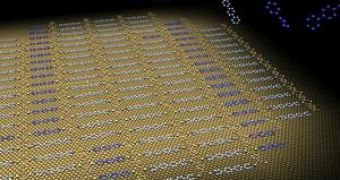Molecular self-assembly is an important method used in molecular nanotechnology to construct objects at a microscopic scale. Using molecular self-assembly the final structure is programmed in the shape and functions groups of molecules. Self-assembly could be used in the future, to create microchips and biological materials that will degrade into molecules that can be broken down by your body.
This method of manipulating molecules, into determining them to self-assemble could reveal an interesting insight in the way life evolved on Earth. The resulting nanostructures will also provide new techniques to making better catalysts, nanotechnologies and surface applications.
Nanometer scale organization is conducted ultra-clean copper surfaces and heated gently to enable motion, sorting and organization. Though the movement on the metal surface is limited to only two dimensions, it is still efficient to allow the mixing of the molecules together. In the process of self-assembly molecules show active selection, those that fall into incorrect positions move to make room for the right ones.
The experiment was conducted at Nanoscale Science Department at the MPI, in which scientists directly observed the basic step of self-selection by imaging grid-like assemblies of molecules, that sorted themselves by size. The spacing between molecular rows is about one nanometer, and are observed using specialized microscopes.
The observation of the nanoscale self-assembly could give a better view on how inanimate lifeless molecules can organize themselves to build biological entities of increased structural and functional complexity such as membranes and cells.
The researching team is currently conducting a large series of experiments related to micro-electronics, optical and chemical properties of new material.
Nanoassembly or "bottom-up" approach, is similar to molecular engineering, the synthesis of a nanostructured material by assembly of its previously prepared nano-building-blocks. There are many nano-assembly techniques currently being studied, including nanoscopic particles created in gas phase, then assembled by condensation.

 14 DAY TRIAL //
14 DAY TRIAL //